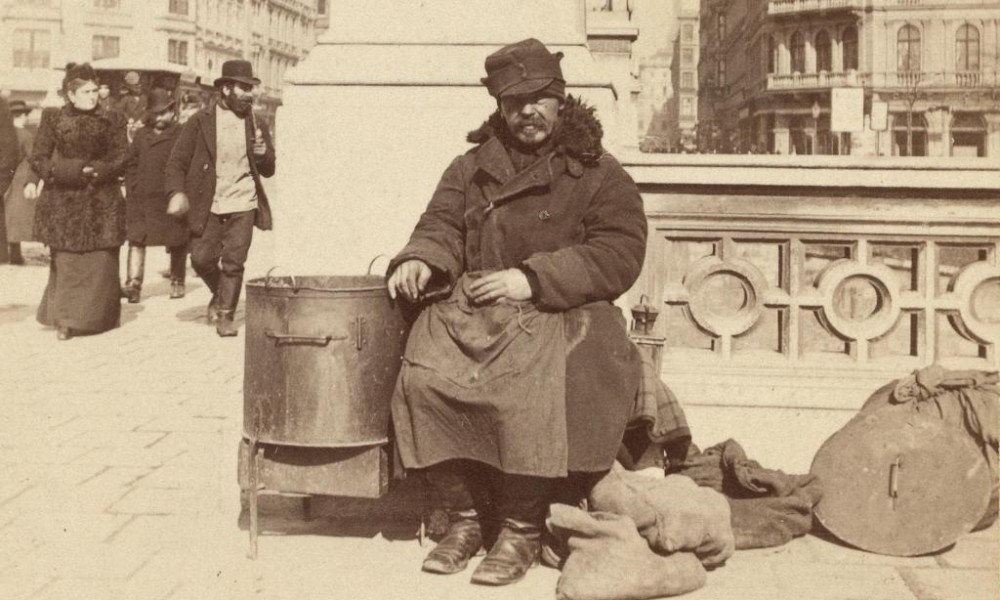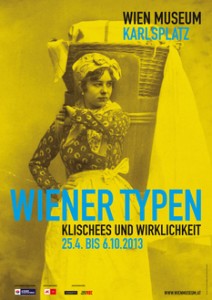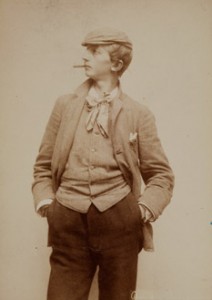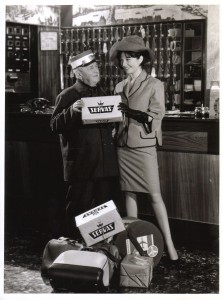Viennese Types – Clichés and Reality” – exhibition in Wien Museum

Aside from its numerous landmarks, Vienna is probably most associated with imperial times and with the old Viennese clichés, including the so-called “Wiener Typen” (Viennese [stereo]types). Among them are, for instance, the “Fiaker” (horse-drawn carriage drivers), the “Wäschermädel” (laundresses) and the “Lavendelweiber” ( “lavender ladies”), to name but a few of these Viennese originals. Through October 6, 2013, you can visit an interesting exhibition on this topic at Wien Museum at Karlsplatz. There, all the Viennese stereotypes are introduced and their rather sobering backgrounds disclosed, ones that often go unnoticed due to our misty-eyed view of the “good ol’ days.”
Originating with street sales and services
The predecessors of the Viennese stereotypes were the “sales calls” that were popular in many European metropolises starting in the 16th century and which made their way to Vienna in the 18th century. Their name refers to the calls with which street hawkers and peddlers called attention to themselves amidst the noise of the city and pitched their wares. “Lawendl, kafts an Lawendl!” (“Lavender, buy lavender!” in thickly accented dialect) – this is what resounded through the streets of old Vienna. Salami salespersons, women selling fruit, chestnut roasters, knife grinders, rag collectors, tinkerers, shoe shiners and many more all offered their services and products.
Tip: Definitely take an Audio Guide into the exhibition (available at the museum’s ticket counter) – you can hear numerous sales calls “almost” in their original form, as well as classics of Viennese nostalgia such as the “Fiakerlied” (horse-drawn carriage song) or the “Schusterbubenlied” (shoe shiner’s song)!
The more the genuine street characters disappeared from the cityscape in the late 19th century as a result of industrialization, the more popular they became as objects of nostalgia for the “good ol’ days.”
Viennese stereotypes in the photo studio
The term “Wiener Typen” (“Viennese [stereo]types”) emerged starting in the 1870s. An example is Otto Schmidt, who was the first to present the characters in photo spreads, first photographed in his studio and later on the street (and occasionally wearing period costume). Artificial stereotypes were added: In addition to the “Pülcher,” the embodiment of the slacker and petty criminal, the “Gigerl” – a dandified fashion monger – was invented; or there was “Frau Sopherl vom Naschmarkt” (Ms. Sopherl from the Naschmarkt – Vienna’s most popular market) as the archetype of the short and stocky market woman, whose “muzzle was like a sword.” All of them continued to dominate the image of Vienna well into the 20th century, even if they continued to disappear from the cityscape. Only a few of them have remained to this day, such as the “Fiaker” (horse-drawn carriage driver), the “Heurigenmusiker” (wine tavern musician) or the grumpy “Herr Ober” (grumpy waiter).
Romanticizing and reality
This view of “the Viennese” was romanticized and the difficult working and living conditions remained suppressed. The most important series of images from the museum’s extensive collection are on display in the exhibition – the clichés are confronted with the reality of migration, child labor or ethic stereotyping. Many of the often romanticized street musicians, for example, who supplied the “soundtrack” to the ostensibly Viennese coziness, were buskers, often blind or disabled ones. Child labor was legal until 1918, even though mandatory schooling had been introduced way back in 1774 and certain laws for the gainful employment of children – above all in factories – were enacted. Back-breaking jobs also existed in gastronomy, where 16-hour days without days off were not seldom and head waiters lived exclusively from tips and cigarette sales.
Thematically, the exhibition covers a broad spectrum – from the idealized and romanticized depictions of the 18th century all the way to the tourism images of today, from forgotten occupations to the longing for Old Vienna.
I visited the exhibition personally and was highly impressed by its scope, its handling of the topic and the comprehensive background analyses. I also found it very good that all textual information in the exhibition is offered in German and English, and the acoustic accompaniment by way of the Audio Guide perfectly complements the many images and photographs.
Info and facts:
Exhibition and opening hours:
until October 6, 2013
Tuesday through Sunday and holidays: 10:00 AM – 6:00 PM
Entrance:
Adults: € 8.00
Students and children up to 19 years of age: free admission
Discounts for senior citizens, university students, and others
For further information, visit www.wienmuseum.at.
Exhibition information and image sources © Wien Museum Karlsplatz, www.wienmuseum.at













